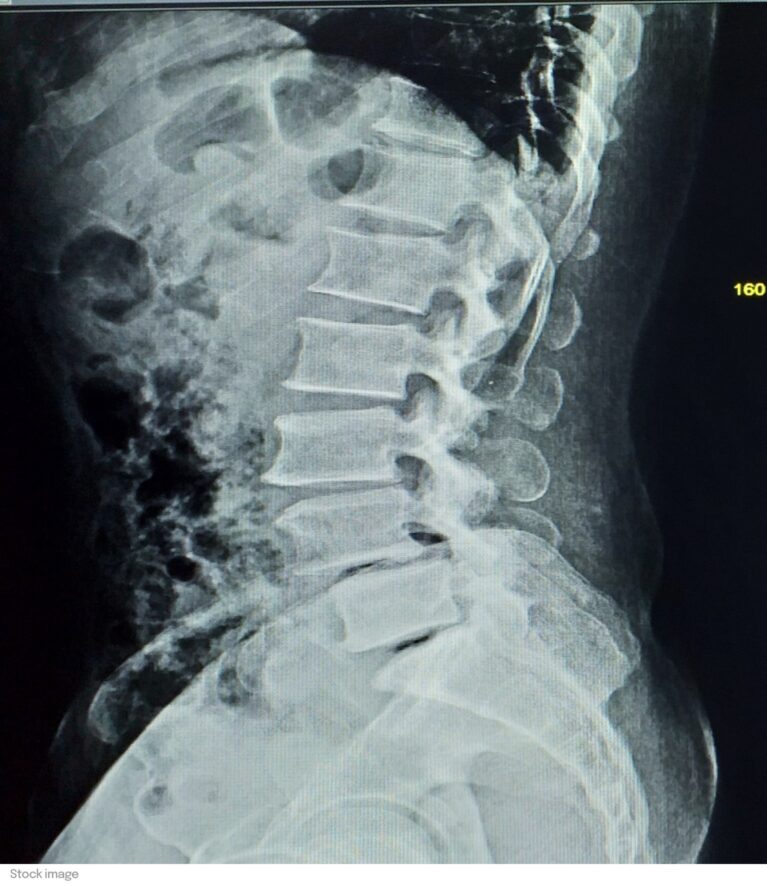
Spondylolisthesis / Spondyloptosis
Spondylolisthesis is the forward slippage of a vertebra in relation to the underlying vertebra. This slippage occurs mainly in the L3 to S1 vertebrae. When the vertebra slips completely, the condition is called spondyloptosis.
Spondylolisthesis can be caused by:
- A fracture during growth in the vertebral isthmus (spondylolisthesis by isthmic lysis)
- Aging of the discs and vertebral joints (degenerative spondylolisthesis)
- Abnormal growth of the vertebrae, such as scoliosis (congenital spondylolisthesis).
Spondylolisthesis can be asymptomatic, and the only follow-up is an X-ray. In the case of pain due to nerve compression or vertebral instability, medical treatment is given (analgesics, anti-inflammatories and physiotherapy). If the symptoms get worse, or if there is muscle weakness or sphincter problems, surgery is planned. This is called arthrodesis and consists of fixing the slipped vertebra with screws, rods and cages to restore its position.